Chess Kingdom : Online Chess - Strategic online gameplay
Challenge friends or players worldwide to online chess battles now!
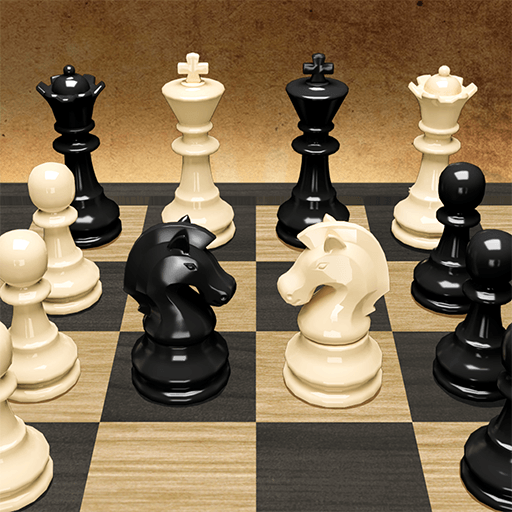
- 5.6332 Version
- 4.9 Score
- 10M+ Downloads
- In-game purchases License
- 3+ Content Rating
Introducing Chess Kingdom : Online Chess
Classic chess for beginners and masters. Play Chess game ONLINE with real opponents from all over the world.
Develop your chess strategy and chess tactics, face the challenge and be the Chess Master now! Touch the screen, move and drop pieces, checkmate, Win!
Chess is a 2-player strategy board game played on a chessboard, a checkered game board with 64 squares in an 8×8 grid.
With powerful chess AI, amusing challenge mode, Chess Kingdom brings you an amazing adventure!
Top FEATURES of Chess Kingdom free:
♞Detailed chess rules with clear diagrams
♞Online, Computer, Double, Review modes
♞Great graphics and exciting sound effects
♞Infinite hints and undo function free for you
♞3 difficulty online levels (Junior>S enior)
♞Retro UI design and comfortable settings
♞Powerful Chess AI, easier for beginners
♞Add local server to keep a stable network
♞Autosave game progress and each move
♞Play with chess masters from all over the world
♞Face-to-face chess online with friends
♞2 player chess: Interactive chess game
Four Modes of Chess:
ONLINE: Challenge real online chess games with opponents worldwide. Real-time battle mode offers infinite game experiences in chess and helps you progress from novice to pro. Four Rooms: Junior, Middle, Senior, and Play with Friends.
COMPUTER: Chess offline practice against AI: perfect chess engine, play against the computer. Simple chess for everyone, especially for amateurs. Daily rapid chess game challenges for promotion. Single player mode is your daily brain trainer and chess tutor.
DOUBLE: Chess with friends face to face in this mode. Your phone screen serves as the chessboard. Enjoy unlimited games and improve your chess rating with friends and family.
REVIEW: Completed games are autosaved in the Review page. Replay finished chess games and check battle records to analyze information, improve skills, and unlock the inner chess master!
Experience amazing chess games online for free!
✓Completing Daily Challenges earns rich rewards
✓Hints guide you when stuck
✓Chess timer: Record game time and step time
✓When against AI, change piece colors anytime
✓Unlimited undos for quick corrections
Learn how to play Chess Kingdom Game!
Chess puzzles start with each player having 16 pieces: one king, one queen, two rooks, two knights, two bishops, and eight pawns. Each piece moves differently. The goal is to checkmate the opponent's king by threatening capture with no escape.
Best free chess app for Android!
Tired of chess games not optimized for smartphones? Chess Kingdom is designed for today's smartphones, looks great, and free! Play and challenge anytime, anywhere with your smartphone.
Free family chess online for all ages!
Relax or keep your mind sharp, join free board games, become a chess king, pass time in a pleasant way! Free multiplayer chess for kids. Train your brain with chess anywhere, anytime.
Hope you have fun and enjoy! ♥
Essential Chess Strategy and Tactics
By EDWARD SCIMIA
Updated on 08/07/24

Illustration: Alison Czinkota. © The Spruce, 2018
A smart way to improve your chess game is by learning time-tested strategies and tactics. Understanding the most common tactical motifs—the fundamentals of chess strategy, popular openings, and important endgame concepts—may give you an advantage in your next match.
Here are some common chess tactics and strategies, and an explanation of why your first moves are so important.
Common Chess Tactics
Tactics are short-term calculated sequences of moves resulting in checkmate, the win of material, or some other gain. An understanding of tactics is crucial to playing good chess. Most games, especially at the club level, are decided by tactical mistakes.
Learning the basic tactics in chess helps you in two ways. It lets you take advantage of your opponent's mistakes while avoiding your own. There are four basic tactics that every chess player should know.
- Fool's Mate: This is the fastest way to checkmate, and it capitalizes on a few key mistakes your opponent might make.
- Forks: Knights are the best pieces for forks because they can take out two opposing pieces in one move. However, every piece on the board has a forking ability.
- Pins: You can also pin your opponent's pieces in, using your queen, rooks, and bishops to pull off this powerful move.
- Skewers: The opposite of a pin, a skewer is when you force a valuable piece to move, and at the same time, your rival leaves a lesser piece vulnerable to attack.
Choose Your Strategy
No chess player can calculate an entire chess game from beginning to end. Even the best computer programs running on the fastest hardware can only "see" a limited number of moves ahead. Beyond what you can calculate, you must rely on strategy to guide you in finding the best plans and moves in a given position.
Chess strategy includes a wide range of concepts, from how to value the pieces to evaluating a position. Mastering these principles will greatly improve your understanding of chess. For instance, your bishops are quite powerful and can be one of your best pieces for defense and offense.
Your First Moves Are Important
Throughout chess history, players have studied the first few moves of the game extensively, and a fierce debate has raged as to the correct way to start.
Opening theory is an extensive field of study for top players, with some analyzing lines well past the 20th move. While this much knowledge is not necessary for most players, knowing the basics of your favorite openings can be the difference between gaining a quick advantage and falling into a known trap.
When you are ready to beef up your strategy, study some of the most popular sequences:
- Ruy Lopez: This is one of the most popular openings, and it is a great way to get full advantage of the board.
- Sicilian Defense: This strategy relies on one move, and it opens up an entire array of possibilities.
If you want to throw off your opponent, try one of the more unusual openings. He or she may not see it coming, and you will get the early advantage.
Finish Off Your Opponent
Many players think that studying endgames is a chore, but a little endgame knowledge can go a long way. Having a better understanding of the endgame than your opponent can change a lost position into a winning one.
After a while, you will learn that a number of checkmate patterns appear over and over. It is one of the interesting aspects of the game and why your ability to recognize patterns is often the key to winning.
If the game reaches an end where only your king or queen is available, you should be prepared with a checkmate strategy for this situation.
Top 6 Black Responses to 1.d4 in Chess
By EDWARD SCIMIA
Updated on 09/20/19
* Edward Scimia is an award-winning chess expert and writer with 15 years of hands-on experience as a private chess instructor and USCF tournament director. Edward is a first place winner of the World Open Chess Tournament and he edited the USCF's e-newsletter, Chess Review Online.

marchmeena29 / Getty Images
In the game of chess, when White plays 1.d4, it limits Black's good responses in comparison to 1.e4. That's not to say that Black doesn't have plenty of reasonable options, though. And while two moves are by far the most popular responses for Black, there are at least six that deserve serious attention by any competitive player.
While there are 20 possible moves Black could play in the position after 1.d4, these six are seen in close to 99% of serious games. Here are the top six answers to 1.d4.
Nf6
The hypermodern choice, Nf6 creates a dynamic imbalance right off the bat by attacking the center with a knight rather than occupying it with a pawn. This usually signals one of the Indian defenses, such as the Queen's Indian or the Nimzo-Indian, and can also lead to the Grunfeld Defence or the Benoni. However, transpositions back into other openings are still possible at this early point. This has become, by far, the most popular response to 1.d4, representing more than half of the high-level games played in most databases.

The Spruce / Tim Liedtke
d5
The other popular response to 1.d4 is to keep a symmetrical position by playing d5. This is a more traditional response, occupying the center and helping to develop the queenside bishop at the same time. Note that both of these moves at least temporarily prevent White from safely playing 2.e4, which would immediately give White a nice strong pawn center. That's a big reason why these two moves have been—and will likely remain—Black's primary weapons against the d4 opening. Common openings deriving from this line are the Queen's Gambit (Accepted or Declined), the Slav, and the Semi-Slav.
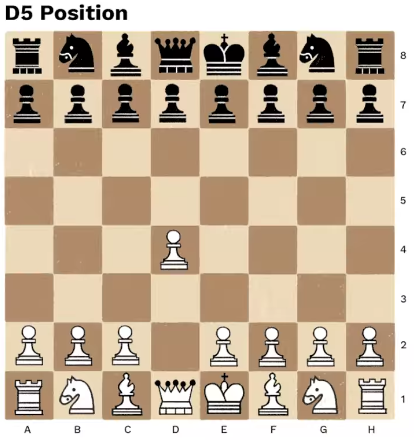
The Spruce / Tim Liedtke
e6
This seemingly passive move is actually something of a placeholder, waiting to see what White will do before committing to a plan themselves. That means that this move can often lead to many of the openings mentioned above should White play 2.c4, as Black can still play either d5 or Nf6 on the second move. However, it also leaves open the possibility of White playing 2.e4, transposing into the French Defense—an opening normally seen after 1.e4.

Illustration: The Spruce / Tim Liedtke
d6
The final three moves on this list could easily be placed in any order, as they are played with similar frequency; d6 is placed here because it shares some similarities with the previous move. Like e6, this is another move that plans to transpose into another opening depending on what White chooses to play. Again, 2.c4 can lead to known Queen Pawn openings like the King's Indian Defense or the Old Indian Defense. But White can once again play 2.e4 as well, which would lead to either the Pirc or the Modern Defense.
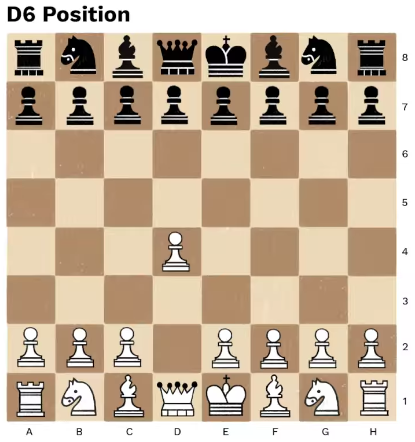
Illustration: The Spruce / Tim Liedtke
f5
The Dutch Defense, signaled by f5, controls the e4 square well. However, it offers a completely different kind of position than the more popular d5 and Nf6 options, usually leading to a positional battle. These can be dangerous waters for those who aren't familiar with the Dutch, and draws are less common after f5 than in most 1.d4 lines.

The Spruce / Tim Liedtke
g6
The final option of note, g6 is yet another move that tends to transpose into other openings and thus isn't really considered indicative of any one opening in its own right. Instead, it often leads (once again) to the Pirc or Modern if White plays 2.e4, while 2.c4 will result in a King's Indian Defense or Old Indian Defense most of the time. It's not a particularly committal move, but it is one that's both flexible and strong.
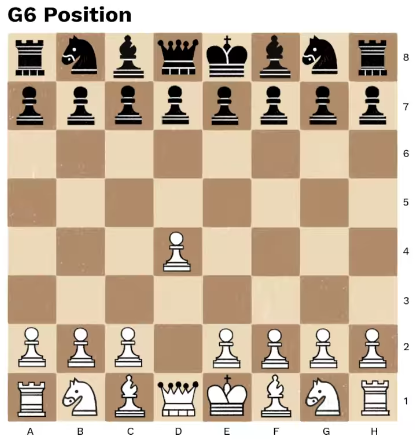
The Spruce / Tim Liedtke
- Version5.6332
- UpdateSep 09, 2024
- DeveloperDoPuz Games
- CategoryBoard & Casino
- Requires AndroidAndroid 5.0+
- Downloads10M+
- Package Namecom.dupuz.checkers.checkmate
- Signature88cbd744406d680582fe2591c68fb492
- Available on
- ReportFlag as inappropriate
-
NameSizeDownload
-
63.33 MB
-
65.44 MB
-
62.85 MB



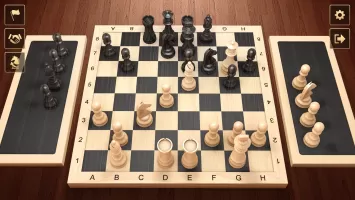
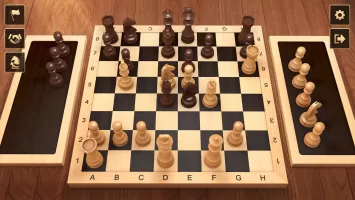
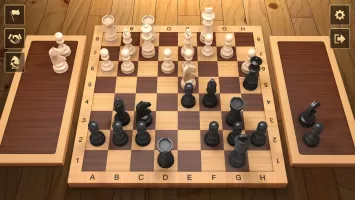
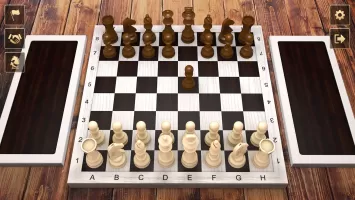
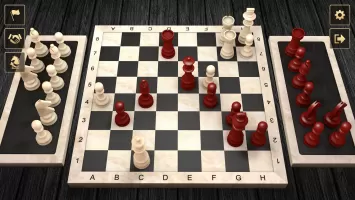
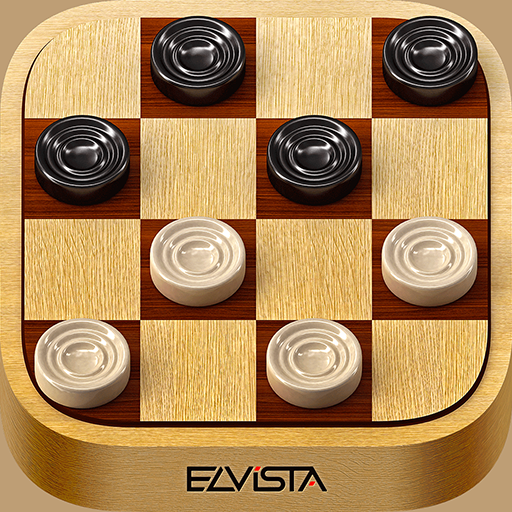



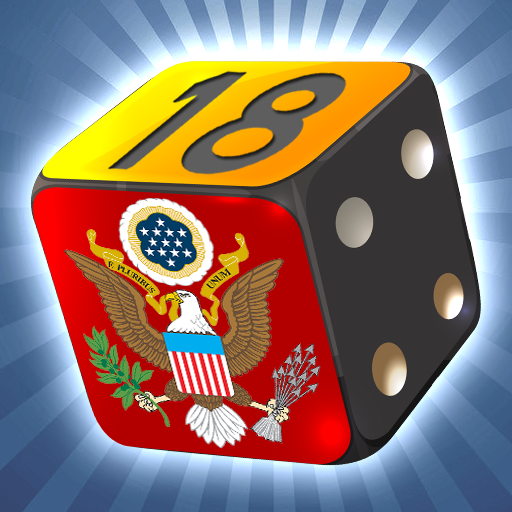




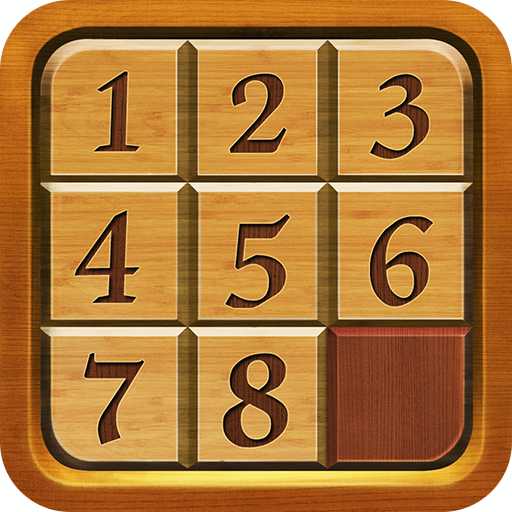















good and great to practice
the graphics are so detailed
overlays are awesome
the engine makes moves that make no sense
M.I.A. button suggested
some times lose points for winning